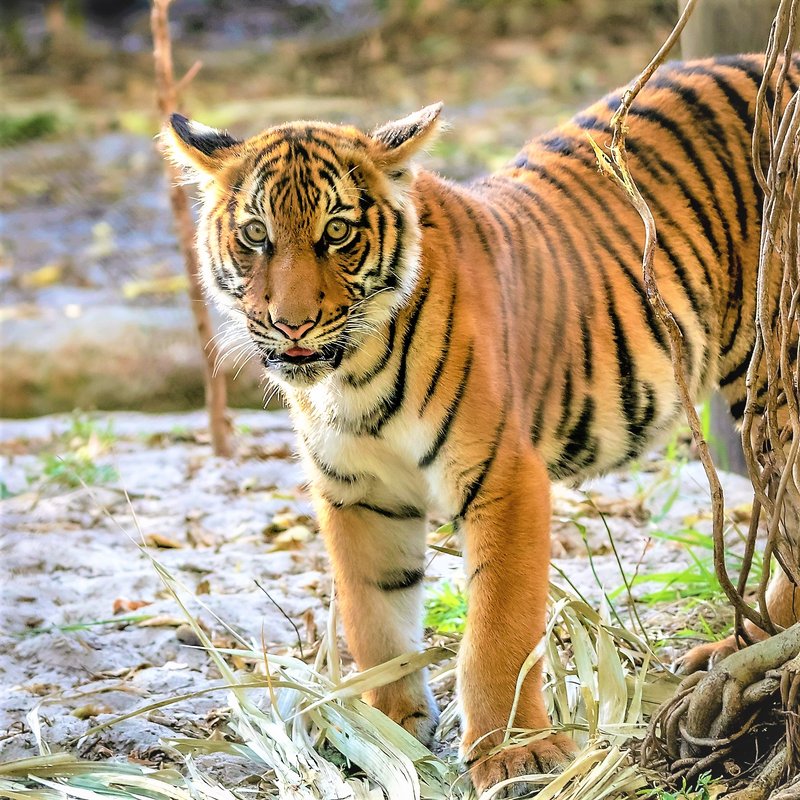
You might wonder how such a beautiful, powerful animal can adapt to various landscapes and conditions. It’s like watching an artist paint a picture, using their surroundings to create something remarkable. From their hunting techniques to their social behavior, Malayan tigers have evolved in fascinating ways that allow them to endure the pressures of their environment. Let’s dive into how these magnificent tigers manage to thrive.
Understanding the Malayan Tiger’s Habitat
Malayan tigers primarily inhabit the dense rainforests of the Malay Peninsula. This environment is rich in biodiversity, filled with tall trees, thick underbrush, and a variety of prey. However, intense humidity and heavy rainfall can make survival tricky. Think of it as being in a sauna while trying to go for a run—you get tired faster, and it’s easy to overheat.
To adapt, the Malayan tiger has developed several physical traits. Their striped coats provide excellent camouflage among the dappled shadows of the forest floor. This helps them sneak up on prey without being easily spotted. Additionally, their powerful muscles allow them to navigate the rugged terrain and leap over obstacles, much like an athlete in peak condition.
Another key feature of their habitat is the availability of water. Tigers love to stay close to rivers or streams, not just for drinking, but also for cooling off after a long, hot day. This natural resource is essential for their survival in the humid environment.
Adaptations for Hunting
When it comes to hunting, Malayan tigers are impressively skilled. They’re solitary hunters, relying on stealth and strategy to catch their prey. Imagine a game of chess: every move is planned, and patience is vital. Tigers use their keen senses to detect movement and scents, allowing them to stalk their target quietly.
One of their standout strategies involves ambushing. Malayan tigers have strong limbs and incredible agility, which let them launch surprise attacks. They often choose areas with dense foliage where they can hide until the last possible moment. This technique is crucial when hunting animals like deer and wild boar, which are their primary food sources.
Interestingly, Malayan tigers are also opportunistic eaters. If their preferred prey is scarce, they won’t hesitate to change their diet. They might turn to smaller animals or even scavenging, showcasing their adaptability.
Surviving the Heat: Behavioral Adaptations
The tropical climate of Malaysia can be brutal. With humidity levels soaring and temperatures often hitting the high 90s, staying cool is key for the Malayan tiger. You might think they’d be lounging in the shade, but there’s so much more to their routine.
To beat the heat, Malayan tigers often hunt during cooler parts of the day—dawn and dusk. This strategy not only helps them avoid the oppressive daytime heat but also aligns with the behavior of their prey, which are often more active in those hours. It’s a win-win situation!
Additionally, tigers are known to take dips in water bodies. They enjoy swimming and often use this to cool down after intense hunting sessions. It’s akin to grabbing a refreshing drink after a long, hot day outside—it reinvigorates them for whatever comes next.
Social Behavior: Solitary Yet Strategic
One might expect that in such a challenging environment, Malayan tigers would need to band together for survival. However, they are naturally solitary animals. Each tiger claims a territory—an area where it can hunt and live without competition from others. This territorial behavior is more than just personal space; it’s a survival tactic that ensures they have enough resources to thrive.
Despite their solitary nature, they are not completely antisocial. Tigers do interact during mating season and, when raising cubs, mothers exhibit incredible nurturing behavior. They play with their young and teach them essential survival skills, ensuring that the next generation is well-equipped to face the challenges of their environment. It’s like passing down family recipes; each generation learns from the previous one.
The Role of Conservation in Their Survival
While Malayan tigers have adapted remarkably to their surroundings, they still face significant threats, primarily from habitat loss and poaching. With forests being cleared for agriculture and urban development, their living spaces are shrinking. This is alarming, considering that these tigers are already classified as Endangered.
Conservation efforts are crucial. Various organizations work tirelessly to protect these beautiful creatures and their habitats. They promote awareness, create protected areas, and conduct research to ensure these tigers have a fighting chance against extinction. Think of it like safeguarding a priceless piece of art; it’s not just about value—it’s about preserving history and biodiversity for future generations.
The efforts to conserve Malayan tigers are not just beneficial for the tigers themselves, but for the entire ecosystem. Healthy tiger populations help maintain balance in their environments, fostering biodiversity.
The Future of Malayan Tigers
The survival of Malayan tigers depends on the actions we take today. As individuals, we can support conservation efforts through advocacy and education. Simple actions, like spreading awareness or supporting conservation organizations, can make a difference in the long run.
Moreover, by embracing sustainable practices in our daily lives, such as reducing waste and supporting eco-friendly products, we contribute to preserving the natural habitats of these incredible creatures. It’s a collective effort, and every small step counts.
In conclusion, Malayan tigers are a testament to nature’s resilience and adaptability. They’ve honed their survival strategies over generations, allowing them to navigate harsh environments. While they face challenges, our awareness and actions can help ensure that future generations will also be able to appreciate the beauty of these majestic animals. After all, every tiger deserves a chance to thrive.

